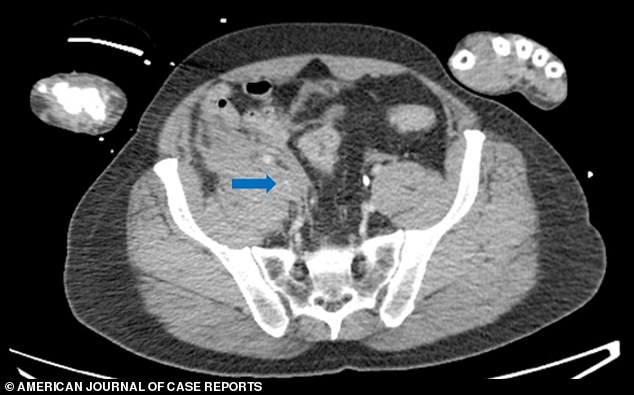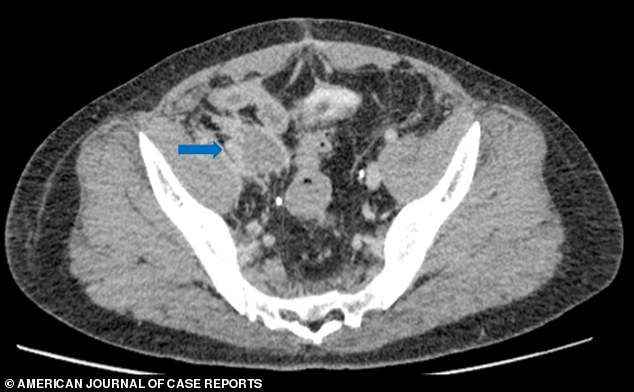A Japanese man had to fight for his life when his chair collapsed and he was impaled by a metal pipe.
The 51-year-old was sitting in a folding chair at home when it collapsed, landing him on top of a rigid tube that penetrated his anus.
He lay bleeding on the bathroom floor for an hour after being impaled before a family member found him and called an ambulance. He was in shock when the paramedics arrived, as he had lost a significant amount of blood.
At the hospital, doctors carried out a series of scans to determine the extent of the damage, particularly to the iliac vein and artery, the main blood vessels supplying blood to the lower part of the body.
They cut open the man’s abdomen to better assess the damage and found no active bleeding. Additionally, a collection of blood that had formed there, called a hematoma, had not grown, suggesting that the bleeding was controlled.
The impaled pipe narrowly avoided a potentially catastrophic injury to a nearby artery that would have caused high-pressure bleeding if it had been punctured.
The doctors’ report on the case did not say whether the man arrived at the hospital with the foreign object still inside that doctors had to remove or whether he had left home alone.
While the man was recovering well after his hospital stay, a day after being discharged he developed swelling in his leg, a sign of a blood clot there, as well as one that had traveled to his lungs.
The man, 51, was sitting in a folding chair at his home in Japan when it suddenly collapsed, landing him on a metal pipe that impaled him (stock)

The blue arrow points to a hematoma, or collection of blood, around the iliac vein, which helped control bleeding after the man was impaled by a tube.
The man’s injury was much milder than it could have been if the tube had pierced the iliac artery, which would have caused rapid internal bleeding.
Instead, the tube pierced the man’s right iliac vein, which is fatal in 25 to 80 percent of cases, but narrowly missed the artery due to the specific angle of the tube as it entered the man’s body. .
After determining that the tube had not damaged the artery and noting damage to the man’s rectum, doctors performed a colostomy, a procedure that creates an opening in the abdomen for the colon to expel waste.
He was in the hospital for 11 days and his condition slowly improved. Little by little he regained the ability to walk and eat solid food.
The doctors allowed him to return home.
But four days later, the man knew something was wrong.
His right leg had begun to swell to the point that he decided he had to go to the hospital and was admitted three days later.
At that time, doctors performed a CT scan that revealed a blood clot in the right common iliac vein, along with a pulmonary embolism (PE), which is a blood clot that traveled to the lungs.

In this CT scan performed after the patient was first discharged, doctors found a blood clot in the left iliac artery, marked by the blue arrow. They also found a blood clot that had traveled to the man’s lungs.
Doctors gave him an intravenous version of a common anticoagulant for a day, which would prevent further clotting.
The next day, investigators said, the patient wanted to go home, “citing his inability to tolerate the hospital environment.”
Doctors agreed and sent the man home with a blood thinner to take by mouth every day with a promise to return for regular follow-up appointments, according to the account published in the American Journal of Case Reports.
“Since then, the patient has regularly attended outpatient follow-up appointments without recurrence of lower extremity swelling and has returned to driving without problems,” they said.
Regular checks of blood markers showed no signs of blood clot recurrence (DVT) or pulmonary embolism (PE).


